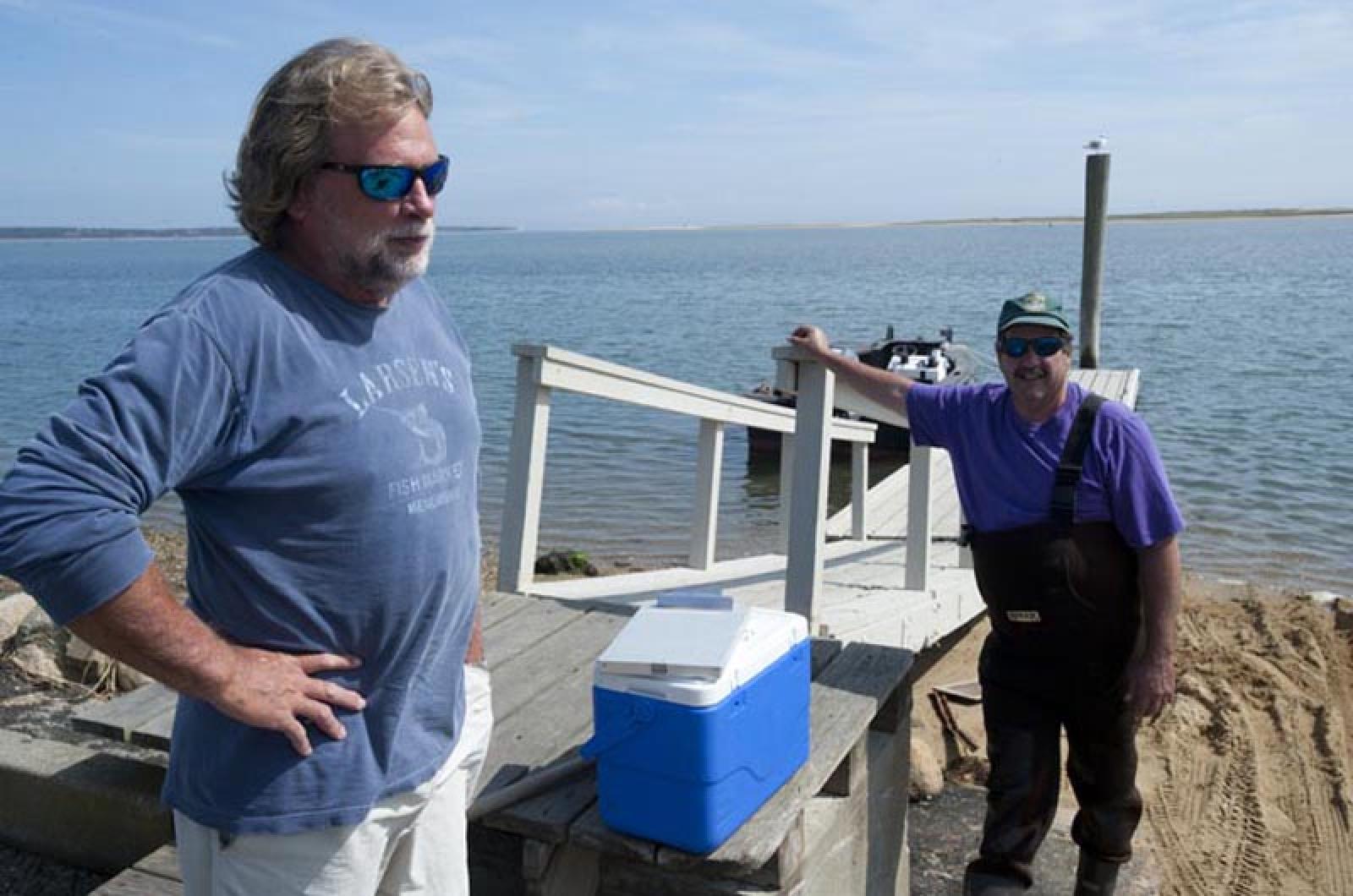The Vineyard waterfront community lost a friend last week. Michael J. Syslo, 60, of Chilmark was always at the bow when it came to the biology of lobsters and the science that goes with the waterfront.
When word of his death last Tuesday, Jan. 29, reached the Island, the news passed quickly by phone and by word of mouth. The waterfront community is close. Everyone agreed; Mike was too young to be crossing the bar.
On Tuesday evening Mike had just completed teaching a class at the Massachusetts Maritime Academy. He died shortly after. The last group of people to have his undivided attention were students, about 30 up-and-coming shellfish officers for the state. The program was sponsored by the Massachusetts Shellfish Constable Association.
Mike gave a talk about the life of lobsters and how shellfish constables can better determine when someone has illegally tampered with an egg-bearing female. There was a slide show and a hands-on experience with live lobsters.
A lot of people on and off the Island were touched by Mike’s enthusiasm for applied science and what an understanding of biology can produce. He would talk about lobsters, about rod and reel fishing and water quality as if every word mattered. Young students who spent time with him got the picture. Science shouldn’t remain in a text book. He was often out in the field, on the shore of Sengekontacket Pond or in a sketchy aluminum skiff on any one of the Island’s many coastal ponds.
Mike was a fixture stirring the water, comfortable in his worn waders.
Mike began working at the Massachusetts Lobster Hatchery in Oak Bluffs in 1978 as an assistant marine biologist, working under John T. Hughes. In 1984 he became the Chief of the Lobster Hatchery when Mr. Hughes retired. When the lobster hatchery stopped producing lobster larvae in 1997, Mike made a career shift to spend more time on the water rather than in his office. In 34 years of service to the state Division of Marine Fisheries, his more recent titles have included regional shellfish biologist and chief of the lobster hatchery research station, now called the John T. Hughes Hatchery and Research Facility.
His enthusiasm for science and understanding sea life was infectious to all who knew him and heard him talk about his subjects.
Mike Armstrong, 54, assistant director of the state Division of Marine Fisheries, said this week he remembers fondly working for Mike at the lobster hatchery in 1980.
“I had just finished my biology degree at the University of Massachusetts at Darmouth,” Mr. Armstrong said. “It was a summer job. Mike was a fun boss. Working at the lobster hatchery helped my path. John [Hughes] and Mike were regular guys. They weren’t stiff collar scientists. They got their hands dirty.”
Many boats in Menemsha have odd names. But for those who love striped bass, the name of Mike Syslo’s lobster boat made sense. It is called Roccus, the scientific genus for the great fish. This is another example of applying enthusiasm for science to daily life on the water.
Mike was as comfortable out on the water doing water sampling with a local shellfish constable as he was out in his boat fishing or quahaugging with his family, especially with his son Benny and daughter Allyson.
Over the years Mike shared many stories about harvesting not only striped bass but also landing lobsters with his own traps. With Mike it was hard to tell what was work and what was play.
Rob Morrison of Edgartown is an up and coming deputy shellfish constable. Last week he was at the Massachusetts Maritime Academy. Mr. Morrison sat in on Mike’s final class on lobsters. Mr. Morrison said the same thing that Mike Armstrong said about Mike 33 years ago.
“He was passionate about what he did. I was happy to be there. He talked about lobsters and lobster management. He gave a slide show presentation. There was a hands-on demonstration.”
Mr. Morrison said he was struck by how much Mike cared about the topic, his topic.
“He was great,” Mr. Morrison said.




Comments
Comment policy »